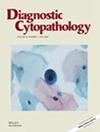The Myriad Spectrum of Salivary Gland Lesions: Cytohistological Correlation on Fine Needle Aspiration Cytology, Core Needle Biopsy, and Resections in a 5-Year Single Institutional Experience of North India
Abstract
Introduction
Fine needle aspiration cytology (FNAC) is a cost-effective method used for preoperative diagnosis of salivary gland lesions. Due to the wide range of tumor types, overlapping morphology, and limited cellularity, diagnosing salivary gland lesions on FNAC can be challenging. A pattern-based approach focusing on cellular and architectural features possible on core needle biopsy (CNB) can help refine differential diagnoses.
Objectives
This study aimed to assess the concordance between FNAC and histological diagnoses obtained from CNB, as well as examine the risk of malignancy (ROM), and evaluate the agreement between histopathological assessments and diagnoses of these lesions in both CNB and resection specimens.
Materials and Methods
A retrospective observational study was conducted in the Department of Oncopathology at a tertiary cancer center of North India over a period of 5 years. Cases wherein diagnosis offered on two modalities—FNAC and CNB were—available, were included.
Results
A total of 105 cases were identified. Category VI was the predominant category (60.95%) and the ROM in categories II, III, and IV was higher compared to that mentioned in the Milan System for Reporting Salivary Gland Cytopathology. Correlation between FNAC and CNB was achieved in 78.1% of cases, and between CNB and the final diagnosis on resection specimen was attained in 100% of cases.
Conclusion
The limitations of FNAC can be obviated by the utilization of CNB. Ancillary studies such as immunohistochemistry and/or cytogenetics wherever necessary can be smoothly applied on biopsy material, establishing the precise diagnosis and thereby providing definitive direction to further management.


 求助内容:
求助内容: 应助结果提醒方式:
应助结果提醒方式:


